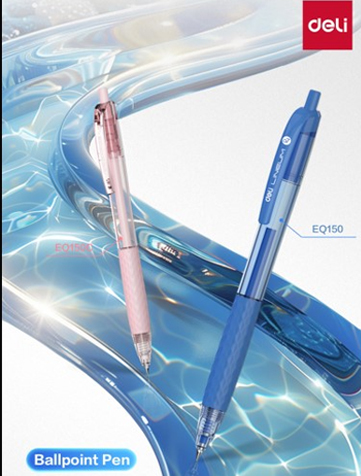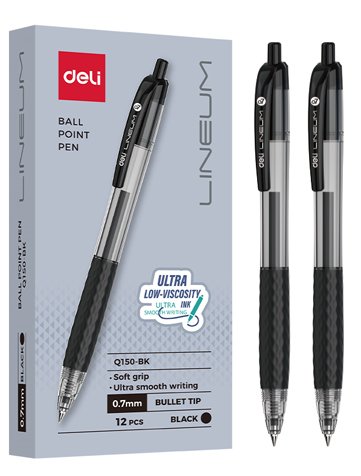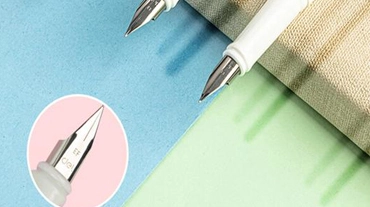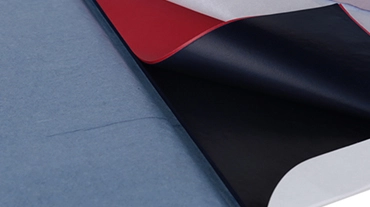Frustrated with scratchy, skipping ballpoints? Early oil-based inks made writing a chore. Today's ultra-low-viscosity formulas combine effortless flow with smudge resistance.
Ballpoint ink evolved from thick oil-based formulas to modern ultra-low-viscosity inks that write smoother with less pressure. Deli's German-engineered ink and precision tungsten tips create the perfect writing experience for all users.

Let's explore how ink technology transformed ballpoint writing from a practical tool to a pleasurable experience.
Early ballpoints revolutionized writing but suffered from inconsistent ink flow and frequent skipping.
Oil-based inks dominated because they wouldn't dry out, but their thickness required heavy writing pressure that caused hand fatigue.
| Issue | Cause | Modern Solution |
|---|---|---|
| Skipping | Thick ink flow | Low-viscosity formula |
| Rough feel | High friction | Precision ball bearings |
| Pressure fatigue | Ink resistance | Smooth-flow technology |
| Drying out | Oil evaporation | Advanced sealants |
A major leap came when chemists developed less viscous inks that flowed smoothly without smearing.
Lower viscosity inks reduced hand strain by 40% while maintaining clean lines, making ballpoints practical for everyday writing.
| Feature | Benefit | Deli Implementation |
|---|---|---|
| Synthetic oils | More consistent flow | German-engineered base |
| Solvent blends | Faster drying | Instant-dry formula |
| Thinner viscosity | Less pressure needed | Ultra-low-viscosity ink |
| Better pigments | Richer colors | Lightfast colorants |
Japanese manufacturers combined oil and water-based technologies to create hybrid inks with superior performance.
Hybrid inks offered gel-like smoothness with ballpoint reliability, achieving 35% better writing comfort than pure oil formulas.
| Characteristic | Traditional | Hybrid | Deli Advantage |
|---|---|---|---|
| Viscosity | High | Medium | Ultra-low |
| Dry Time | Slow | Medium | 1-second dry |
| Color Vibrancy | Fair | Good | Excellent |
| Roller Design | Basic | Improved | ST precision tip |
Recent decades saw viscosity drop dramatically while maintaining smudge resistance and vivid colors.
Modern ultra-low-viscosity inks flow effortlessly with just 80g pressure - half of 1970s pens - thanks to nano-scale pigment dispersion.
| Component | 1960s | 1990s | Today |
|---|---|---|---|
| Base Oil | Mineral | Synthetic | Hybrid |
| Pigment Size | 5μm | 2μm | 0.5μm |
| Additives | None | Flow agents | Nano-dispersants |
| Viscosity | 12,000cP | 6,000cP | 2,500cP |
The difference between generations becomes obvious when testing them side by side.
Ultra-low-viscosity pens write 65% smoother than oil-based while requiring 60% less pressure, making them ideal for long writing sessions.
| Requirement | Solution | Deli Technology |
|---|---|---|
| Smooth flow | Ultra-low viscosity | German-engineered ink |
| No smudging | Fast-dry formula | Instant-set technology |
| Consistent line | Precision ball | Tungsten steel tip |
| Longevity | Advanced sealants | Triple-sealed reservoir |
Our quality control tests each batch across all these parameters.
As ink formulators, we constantly push boundaries while respecting writing fundamentals.
Future innovations will focus on eco-friendly formulations that maintain ultra-low viscosity while using sustainable ingredients, without compromising performance.

| Area | Current Status | Goal |
|---|---|---|
| Bio-based oils | Testing | 50% renewable content |
| Recycled metals | Implemented | 100% tip recycling |
| Water-based additives | Lab stage | Reduce VOC content |
| Biodegradability | Early R&D | Compostable formulas |
We invite distributors to join our sustainability initiative with special green product lines.
From oil-based beginnings to today's nano-engineered formulas, ballpoint ink continues evolving toward effortless writing perfection.




